Dairy farming is a significant source of revenue for small/marginal farmers and agricultural laborers. Animal manure, in addition to milk, is a good source of organic matter for boosting soil fertility and crop yields. The dung’s Gober gas is used for home reasons as well as to power engines that pull water from wells. Feeding the animals with leftover fodder and agricultural by-products is a profitable endeavor.
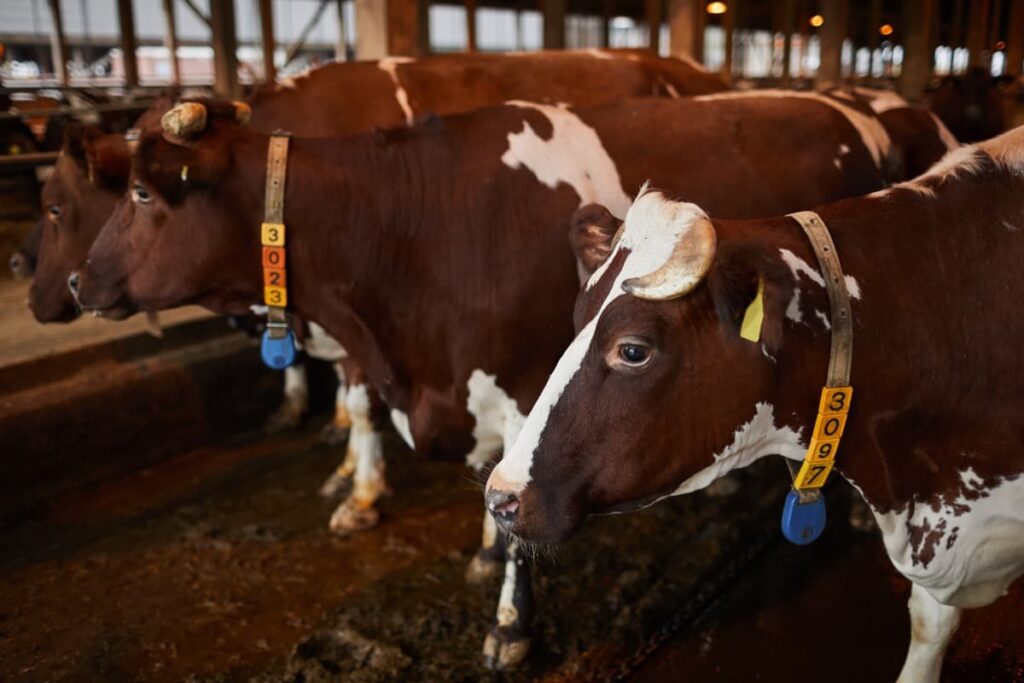
Bullocks provide almost all of the draught power for farm activities and transportation. Dairy farming provides year-round work for many people because agriculture is mostly seasonal. As a result, dairy provides year-round work. Small and marginal farmers are the primary beneficiaries of dairy programs. Experts always recommend that farmers begin a small dairy operation. Establishing a small-scale enterprise benefits farmers with little or no prior expertise.
It can be a good way for them to supplement their income. Farmers can gradually expand their farms to large herds in the future. Many banks and financial institutions offer loans to farmers under various development programs to support them. Since the introduction of refrigeration technology in the late 1800s, including direct expansion refrigeration and the plate heat exchanger, milk preservation methods have improved.
Dairy farms could preserve milk by decreasing spoilage caused by bacterial growth and humidity using these cooling technologies. Many countries, including India, the United States, China, and New Zealand, have large dairy sectors that act as critical producers, exporters, and importers of milk. According to the FAO, total milk production has risen steadily since the late twentieth century, with 827,884,000 tonnes produced in 2017.
Dairy Farming Advantages
- Currently, the milk manufacturing sector is the most sought-after industry on the planet. In the market, milk and milk products are in high demand. This is the most significant advantage of starting a commercial dairy cow farming business.
- Milk and its products will never be in short supply because both vegetarians and non-vegetarians will consume it.
- You won’t have to bother about promoting the products because it’s a typical firm, which means you’ll be able to sell them quickly.
- It is an environmentally friendly company.
- Instead of employing workers, you can improve dairy output through technology.
- Proper planning, managing, and caring for your animals may make the most profit. As a result, you will have an excellent source of revenue.
Herd Management
The dairy sector is a dynamic industry that is always changing. New technology and legislation modify management techniques, allowing the industry to evolve toward greater economic and environmental sustainability. Intensive and extensive systems can be used to categorize management strategies. Extensive systems follow a philosophy of low input and low output, whereas intensive systems follow a philosophy of high input and high output.
In case you missed it: How to Start Sustainable Dairy Farming: Benefits and How to Reduce Your Carbon Footprint With Dairy Cattle
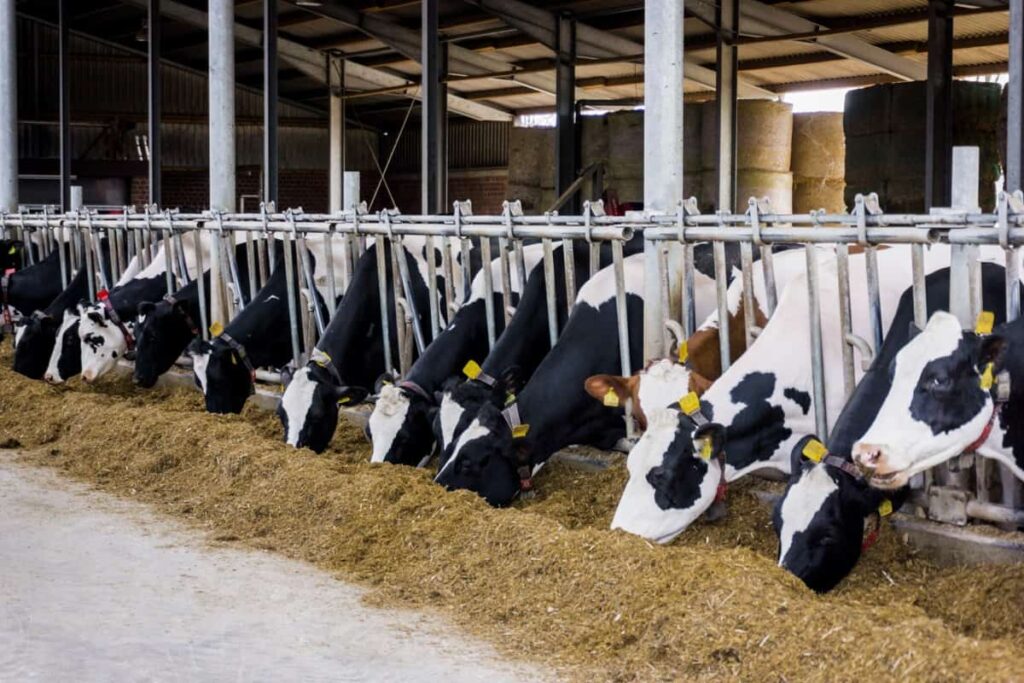
Different management of nutrition, housing, health, reproduction, and waste reflects these beliefs, as well as available technologies, local rules, and environmental conditions. Animals are divided into distinct management units on most modern dairy farms based on their age, nutritional demands, reproductive state, and milk production status. The milking herd, or the group of cows that are now lactating, is frequently maintained the most actively to ensure that their nutrition and surroundings are suitable to produce as much high-quality milk as possible.
On specific farms, the milking herd is separated into milking strings, which are groups of cows with varying nutritional requirements. Dry cows are members of the adult herd who are not being milked during their resting phase before giving birth to their next calf. Heifers are female animals that have not yet given birth to their first calf. They will eventually grow up to replace older animals in the milking herd and are consequently referred to as the replacement herd.
Dairy Farming’s Potential and National Importance
India is home to the world’s greatest livestock population. It is home to 57.3 percent of the world’s buffalo population and 14.7% of the world’s cattle population. In 2011-12, milk production was valued at Rs. 3,05,484 crores. At the end of the Eleventh Plan (2011-12), the country’s total milk production was 127.9 million tonnes per year, with demand predicted to reach 180 million tonnes by 2020.
To meet this demand, milk output must grow at a rate of 5% per year rather than the current 2.5 percent. In 2011-12, the annual growth rate for milk production was at 5%. As a result, there is a huge opportunity/potential for profitable dairy farming to increase milk output.
Milk-Producing Cow Breeds in India
Gir
This cattle breed is native to the Gir forests of Gujarat’s South Kathiawar district but can also be found in Rajasthan and Maharashtra. Bhandari, Desan, Gujarati, Sorthi, Kathiawari, and Surati are some of the other names for it. Gir cattle’s horns are unusually curled, giving them a ‘half-moon’ look. It produces between 1200 and 1800 kilos of milk every lactation. This bread is known for its hardiness and resistance to disease.
Sahiwal
Sahiwal is the Punjabi language that emerged in undivided India’s Montgomery region (now Pakistan). Lola, Lambi Bar, Teli, Montgomery, and Multani are all names for this cow breed. The Sahiwal is the country’s best indigenous dairy breed. Sahiwal milk yields between 1400 and 2500 kilos per lactation on average. Haryana, Punjab, Delhi, and Uttar Pradesh are just a few of the states where it may be found.
Red Sindh
The red Sindhi is primarily prevalent in Pakistan’s Karachi and Hyderabad districts. Sindhi and Red Karachi are two other names for it. This cattle breed’s body color is primarily red, with tints ranging from dark to light red and white stripes. It produces milk in quantities ranging from 1100 to 2600 kilos. In crossbreeding programs, red Sindhi is frequently employed.
Rathi
Another milch cattle breed is found in Rajasthan’s arid regions. This breed is thought to have arisen from a cross between the Sahiwal, Red Sindhi, Tharparkar, and Dhanni breeds, with a heavy Sahiwal influence. The cows are efficient and excellent milkers. The lactation milk yield ranges from 1062 to 2810 kilos, and they produce 1560 kilograms of milk.
In case you missed it: Sustainable Solutions of Cow Dung Manure: Production Process, Exploring the Benefits and Applications
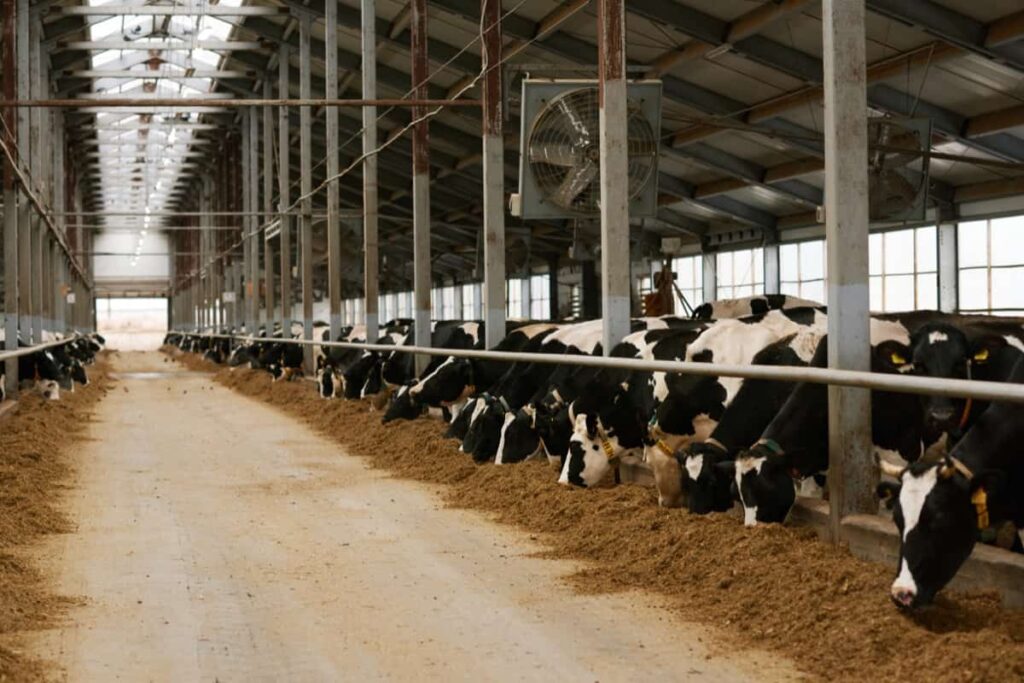
Ongole
This cattle breed is native to the Ongole taluk in Andhra Pradesh’s Guntur region. They are a huge, muscular cattle breed with a prominent hump. Ongole is well-suited to heavy-duty draught work. They’re also known as Nellore, and their average milk supply per lactation is 1000 kg.
Deoni
Deoni is native to Western Andhra Pradesh, but it can also be found in Maharashtra’s Marathwada region and bordering Karnataka. Deoni’s milk output ranges from 636 to 1230 kg each lactation, with an average calving interval of 447 days. Bullocks are employed to help with hard farming.
Financial Assistance
Detailed project studies will be required for dairy schemes with high outlays. Capital asset purchases, such as dairy cows, shed construction, and equipment purchases, are examples of finance items. The cost of feeding for the first one or two months is capitalized and lent as a term loan.
Land development, fencing, well drilling, diesel engine/pump set commissioning, electrical connections, essential servants’ quarters, godowns, transport vehicles, milk processing facilities, and other costs may be eligible for a loan. Borrowers can use the services of NABARD Consultancy Services (NABCONS) for high-value projects, as they have extensive experience in preparing Detailed Project Reports.
Technicals/Business Plan
- Proper location, and Effective use of Land
- Number of animals to consider
- Cowshed, storage rooms, and labor rooms
- Required equipment such as feed cutting machine (you can get a subsidy on this), digging pits for sailage, feed storage bags,s, etc.
- Transport van, milking machines, milking cans, etc.
- Division of shed for adult cows and calfs
- Selection of best cow breeds from a genuine source
- Management of lactation periods, milk yield per day, dry days, conception rate, the mortality rate
- Fodder management and nutrition management
- Taking care of veterinary requirements for any diseases and regular checkups and vaccinations
Lending Terms
- Outlay: The cost of the project is determined by the local conditions, unit size, and project components. The outlay may be calculated using current market values.
- Margin cash: The margin varies depending on the borrower’s category and might range from 10% to 25%. Within the broad guidelines, banks are permitted to set their interest rates. However, we used a 12.50 percent-per-annum interest rate to calculate the financial viability and bankability of the model projects.
- Protection: The security would be by NABARD/RBI norms that are updated regularly.
- Repayment period of the loan: The scheme’s gross surplus determines the repayment period. The loan will be repaid in convenient monthly/quarterly installments over five to seven years.
- Insurance: The animals and capital assets may be insured annually or on a long-term master policy, where ever it is applicable.
In case you missed it: How to Make Cow Dung Manure Compost: A Step-by-Step Guide to Use in Your Farm/Garden
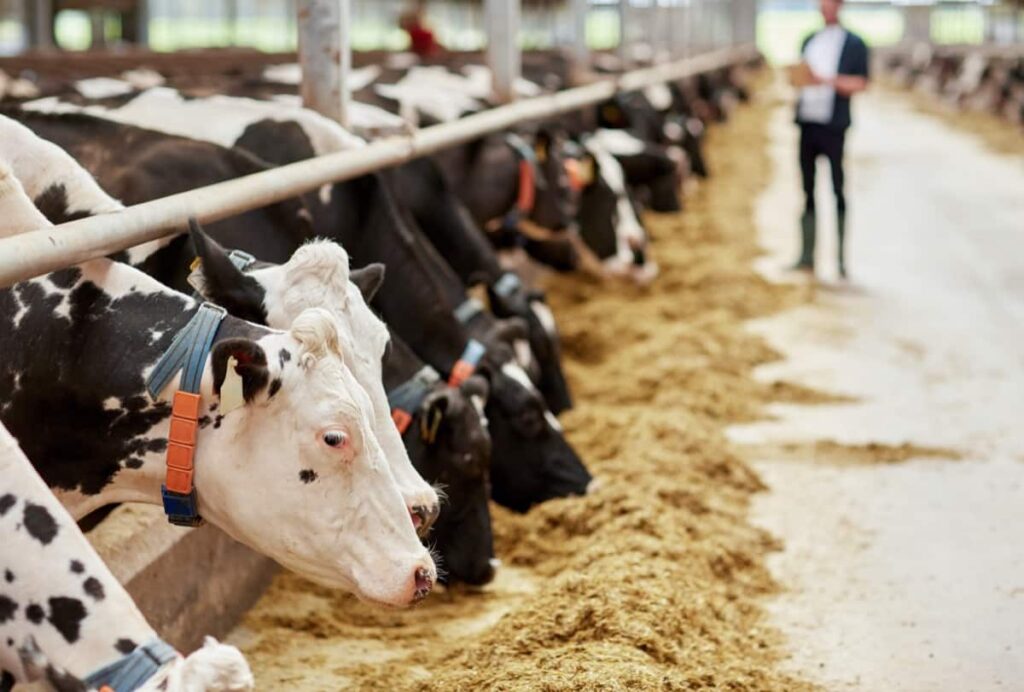
50 Cow Dairy Farming Project Report
Particulars
| No. of Animals | 50 |
| Cost of Animal (Rs. /animal) including transportation | 53,000 |
| Average Milk Yield (liter/day) | 15 liters |
| Covered Floor space per adult animal (sq. ft) | 30 |
| Open space per adult animal (sq. ft) | 100 |
| Manger length/animal in inches | 25 |
| Cost of construction per sift (Rs) | 200 |
| Cost of milking machine with accessories | 5,00,000 |
| Another equipment cost per animal (Rs.) | 1,000 |
| Cost of fodder cultivation (Rs. /acre/season) | 5,000 |
| Insurance premium (% per annum) | 5 |
| Veterinary aid/animal/ year (Rs.) | 1,000 |
| Cost of concentrate feed (Rs. /kg) | 12 |
| Cost of dry fodder (Rs. /kg) | 1 |
| Rate of interest (%) | 12 |
| Repayment period (years) | 6 |
| The selling price of milk/liter (Rs. /kg) | 24 |
| Lactation days | 270 |
| Dry days | 150 |
Lactation and Dry Period Feed Consumption Chart
| Feeding stuff | Cost/kg (Rs) | During lactation period | During dry period | ||
| Quantity (kg) | Cost (Rs) | Quantity (kg) | Cost (Rs) | ||
| Concentrate feed | 12 | 6.5 | 78 | 1 | 12 |
| Fodder (green) | 1 | 25 | Cultivation | 20 | Cultivation |
| Fodder (dry) | 2 | 6 | 12 | 5 | 10 |
| Total | 90 | 22 |
In case you missed it: Country/Free Range Chicken Farming Project Report: Business Plan, Investment, Profit, and Loan in India
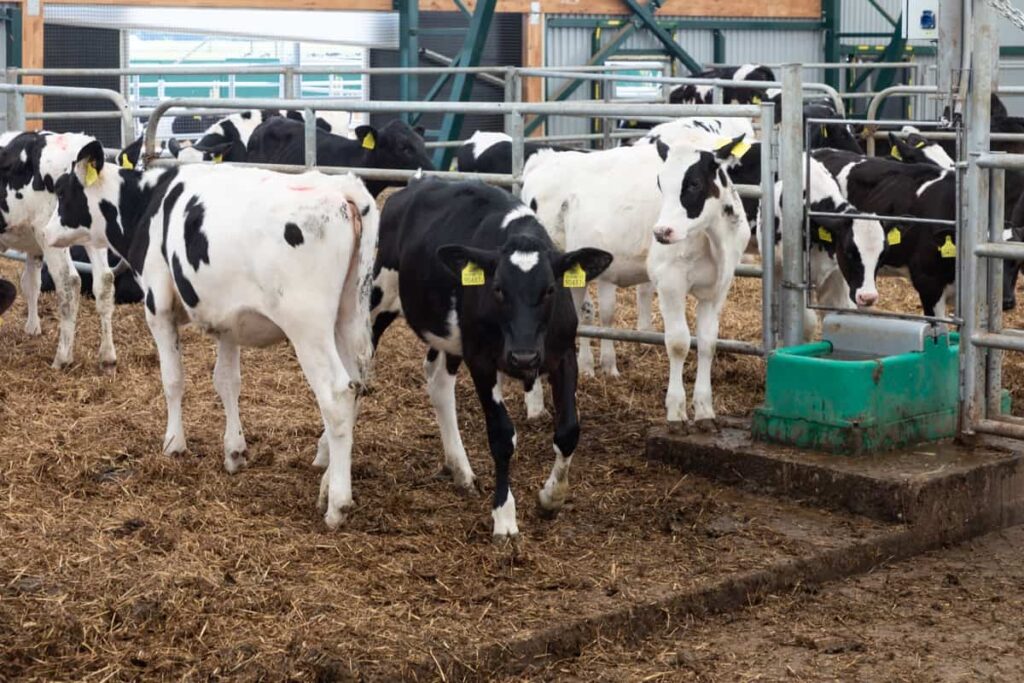
Investment Capital
Capital Cost
| Project Cost and Bank Loan | Cost (In Rs) |
| Covered area for 50 cows (30sq.ft/bufalo@200/sqft) | 3,00,000 |
| Cost of construction of boundary & manager for open space and miscellaneous | 2,50,000 |
| Cost of Storeroom construction store room cost (200 sq. Ft @250 per sq. Ft) | 50,000 |
| Cost of 50 cows with a minimum average 15-liter milk yield /day (53000/buffaloes including transportation) | 26,50,000 |
| Cost of dairy appliance @ Rs.1000/Buffalo | 50,000 |
| Cost of a bulk cooler of 500 liter capacity for a shed | 2,60,000 |
| Borewell and pump set installation | 80,000 |
| Electrification | 40,000 |
| Cost of overhead tank & pipeline installation | 70,000 |
| Cost of chaff cutter | 1,00,000 |
| Total | 43,50,000 |
Recurring Cost
| Cost of medicine, vaccine, and electricity for the first month | 1,35,000 |
| Insurance (5% of the animal cost) | 1,25,000 |
| Cost of feed for the first batch of50 cows for one month, as per the feed chart | Cost of medicine, vaccine, and electricity for the first month |
| Cost of medicine, vaccine, and electricity for the first month | 10,000 |
| Miscellaneous | 11,250 |
| Total recurring expenditure | 3,31,250 |
| Total project cost | 50,12,500 |
| Margin money | 12,53,125 |
| Bank loan 75% of project cost | 37,59,375 |
Income Table
| Particulars | Income |
| Sale of cow milk per annum | 48,60,000 |
| Sale of manure (5000 Rs/cow/annum) | 2,50,000 |
| Total | 51,10,000 |
In case you missed it: Beekeeping Business Plan: Bee Farming Cost, Profit, and Project Report in India
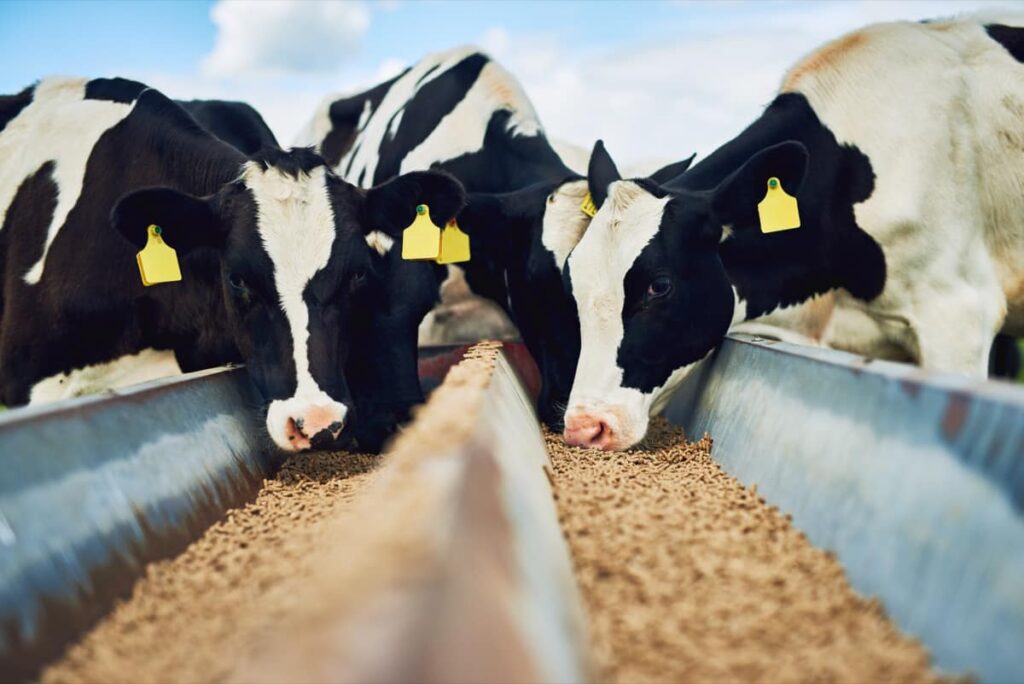
Loan Repayment Schedule And Profit Margin Years
| Year | Loan | Gross surplus | Interest | Principal | Total repayment | Profit | Balance Outstanding Loan |
| 1 | 37,59,375 | 51,10,00 0 | 4,69,921. 8 | 6,26,562. 5 | 10,96,484.3 | 40,13,51 5.7 | 31,32,812.5 |
| 2 | 31,32,812. 5 | 51,10,00 0 | 3,91,601. 5 | 6,26,562. 5 | 10,18,164.0 | 40,91,83 5.9 | 25,06,250 |
| 3 | 25,06,250 | 51,10,00 0 | 3,13,281. 2 | 6,26,562. 5 | 9,39,843.7 | 41,70,15 6.2 | 18,79,687.5 |
| 4 | 18,79,687. 5 | 51,10,00 0 | 2,34,960. 9 | 6,26,562. 5 | 8,61,523.4 | 42,48,47 6.5 | 12,53,125 |
| 5 | 12,53,125 | 51,10,00 0 | 1,56,640. 6 | 6,26,562. 5 | 7,83,203.1 | 43,26,79 6.8 | 6,26,562.5 |
| 6 | 6,26,562.5 | 51,10,00 0 | 78,320.3 | 6,26,562. 5 | 7,04,882.8 | 44,05,11 7.1 | 0 |
Disclaimer: The figures above are entirely fictitious and are just assumed (not verified) to produce excellent outcomes in practice. We are not responsible for any inaccuracies in this project, as well as any decisions or activities performed as a result of using this site.
- Sheep Farming Business Plan for Beginners
- Aquaponic Farming at Home: A Step-By-Step Guide
- Profitable Village Farming Business Ideas in 2024
- High-Yield Aquaculture: Fast-Growing Fish for Farming
- Effective Fish Pond Construction Techniques for Beginners
- Irrigation and Water Management in Pineapple Farming
- Blossom to Harvest: Mastering Flowering and Pollination in Papaya Farming
- Pig Fattening Essentials: From Selection to Sale for Beginners
- Raising Wagyu Cattle: A Complete Guide for Premium Beef Production
- Soil Types and Their Water Holding Capacity
- Optimizing Irrigation Schedules for Coconut Groves for Enhanced Yield
- Espresso Your Garden: Coffee Grounds for Healthier Acid-Loving Plants
- The Best Soil Mix for Snake Plants: How to Mix Your Own Snake Plant Soil
- Green Thumb Success: Expert Tips for Cultivating Greenhouse Beans All Year Round
- Bloom All Year Round: The Ultimate Guide to Indoor Hyacinth Care
- Eco-Friendly Gardening: How to Make Liquid Fertilizer from Kitchen Waste
- Ultimate Guide to Grow Anise in Pots: Explore Seed Propagation to Harvesting
- Guide to Raising Chester White Pigs: Discover Breed Facts to Growth Management
- Mastering the Elegance: The Ultimate Guide to Weeping Cherry Tree Care, Planting, and Maintenance
- Ultimate Guide to Planting Garlic in Grow Bags: Growing Strategies for Beginners
- How to Fix Spider Plant Leaf-Related Problems: Natural and Organic Remedies
- 10 Reasons Why Your Tulsi Plant is Shedding Leaves: Home Remedies and Solutions
- Optimizing Growth and Yield: The Advantages of Palm Bunch Ash Fertilizer
- Utilizing Neem Oil Extract as a Natural Pesticide for Hydrangea
- From Soil to Harvest: Various Ways in Which Farmers Can Use AI Tools
- Steps to Encourage and Induce Citrus Flowers: A Comprehensive Guide
- How to Fix Snake Plant Leaf-Related Issues: Natural and Organic Remedies
- Transform Your Garden into a Fragrant Oasis with Raat Ki Rani (Night Blooming Jasmine)
- Discover the Ideal Chicken Breeds for Philippine Farms
- How to Create a Poultry Egg Farm Business Plan for Profits
- Grow Lemon Cucumbers Like a Pro: Insider Techniques for Bountiful Yields
- Ultimate Guide to Caring for Your Pink Princess Philodendron: Tips for Thriving Variegation
- Areca Nut Profit Per Acre: Calculating Yield and Cost of Cultivation
- How Kaveri Chicken is Becoming a More Profitable Breed in Indian Backyards
- Transform Your Barn: 9 Steps to Convert a Horse Stall into a Chicken Coop
- Exploring Suffolk Sheep Disadvantages with Limitations and Challenges

Opening Dairy Farm 100 Cattles 50 bufflows 50 cows
hi Sudershanji,
all the best wishes, just enquirying , have to started your project and how it goes, what are the major advice you can give .
thanking you.
i m very interest in Dairy Farming but due to money and place(plot) I could not do. If any of you help and support me sir I promise will success and show my ability.
I interested diary project,I have 10 lakh, minimum requirements 40 lakhs .any central government schemes & subsidy policy details please,at present starting 20 cow then after one year added 15 cow and finally added 15 Cow, my land at present 4 bigha./80 Katha’s _80×720 sqft